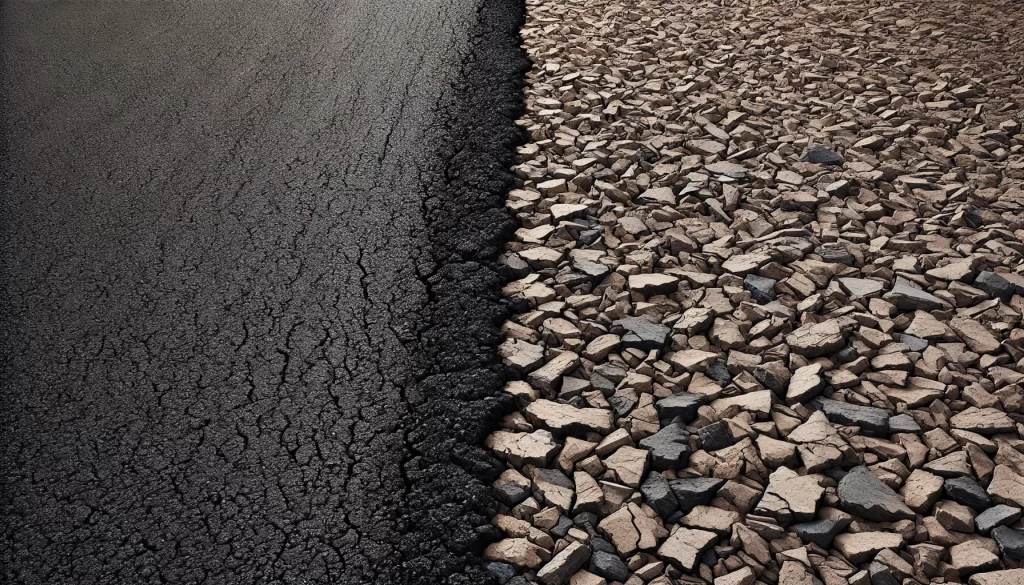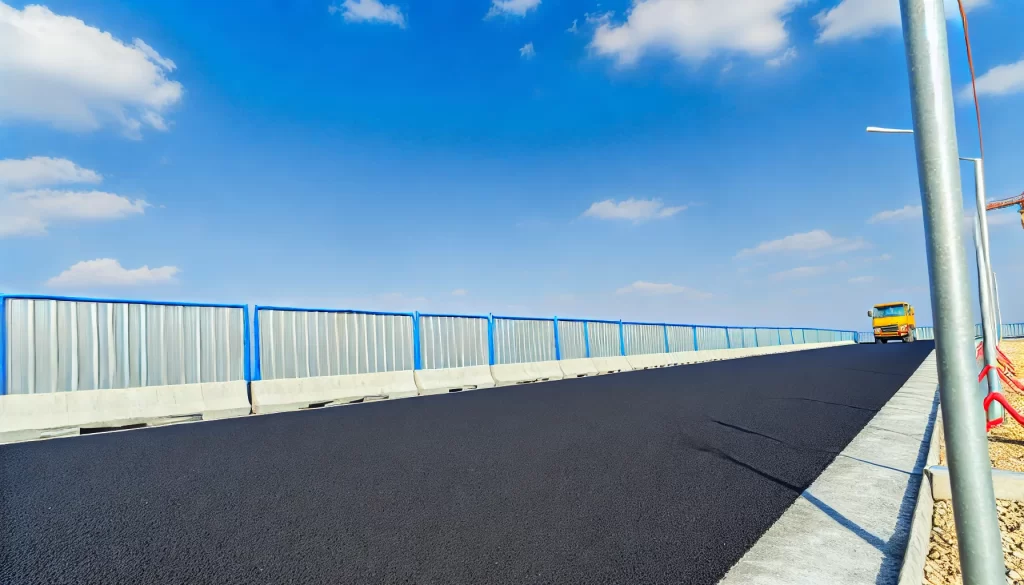Table of Contents
One question often stands out regarding paving projects: How long does asphalt take to dry? This question is crucial for both homeowners and contractors. Knowing how long does asphalt take to dry can help you plan your project effectively, avoiding unnecessary delays and ensuring the best results. Asphalt is widely used for roads, driveways, and parking lots due to its durability and smooth finish. However, many people need to be made aware of the factors that influence how long does asphalt take to dry. In this article, we will uncover the shocking facts about how long does asphalt take to dry, providing you with the knowledge needed to make informed decisions.
What is Asphalt?

Understanding Asphalt
Asphalt is a mixture of aggregates, such as sand, gravel, and crushed stone, combined with a binder known as asphalt cement. This combination creates a durable and flexible material used in various applications, from roads to roofing. While asphalt is preferred for many paving projects because it can withstand heavy loads and resist weather-related damage, many people wonder, how long does asphalt take to dry? Understanding the materials involved and how long does asphalt take to dry is critical to ensuring your paving project is successful and long-lasting.
Types of Asphalt
There are two primary types of asphalt: hot mix and cold mix.
- Hot Mix Asphalt (HMA): This type is heated to a high temperature before application, making it ideal for areas with heavy traffic. Because it is laid hot, it compacts well, providing a smooth and durable surface. HMA is generally used for large projects like highways and city streets.
- Cold-mix asphalt (CMA): This type is not heated and is primarily used for patching and repairs. It is more user-friendly and can be applied in various weather conditions, but it tends to take longer to dry than a hot mix.
Understanding these types of asphalt is essential for knowing how long each takes to dry.
How Long Does Asphalt Take to Dry?
Factors Affecting Drying Time
Several factors influence how long does asphalt take to dry. By understanding these factors, you can better plan your paving project and ensure optimal results.
- Temperature: One of the most significant factors affecting drying time is temperature. Warm weather speeds up the drying process, while cold weather slows it down. Ideally, asphalt should be laid when temperatures are above 50°F (10°C) for the best results.
- Humidity: Humidity levels are also crucial to how long asphalt takes to dry. High humidity can slow down evaporation, making the drying process longer. Conversely, low humidity can help the asphalt dry faster.
- Thickness of the Layer: The thickness of the asphalt layer directly impacts drying time. Thicker layers take longer to dry because they contain more material that needs to evaporate. If possible, it’s best to apply thinner layers for quicker drying.
- Type of Asphalt Used: As mentioned earlier, hot mix asphalt dries faster than cold mix. If time is a concern, opting for a hot mix can be beneficial.
General Drying Times
On average, asphalt takes about 24 to 48 hours to dry for light traffic. However, this can vary depending on several factors. For example, in ideal conditions with warm temperatures and low humidity, the drying time may be as short as 24 hours. On the other hand, calmer, more humid weather can extend the drying time to 48 hours or more.
It’s important to remember that while asphalt may be dry enough for light use within this period, it can take several weeks to cure completely, allowing it to harden and bond properly with the underlying material.
Signs That Asphalt is Dry

How to Tell if Asphalt is Ready
Knowing when asphalt is dry is essential to avoid damage. Observe the following warning signs:
- Color Change: Fresh asphalt is typically dark black. Its hue progressively lightens as it dries. If you notice a significant color change, this may indicate that the asphalt is drying.
- Firmness: One simple test is to press your foot on the surface. If it feels firm and does not leave a mark, it’s likely dry. If your foot sinks in or leaves an impression, it’s still too wet.
- No Sticky Residue: If the asphalt does not feel tacky to the touch, it is dry enough for light use. A sticky surface means that it hasn’t thoroughly dried yet.
Tips for Quick Drying
How to Speed Up Asphalt Drying
If you’re in a hurry, there are several ways to help asphalt dry faster:
- Use a Heater: If the weather is cold, consider using a heater to warm the area. This can significantly reduce drying time.
- Choose a Sunny Day: Planning your paving project on a sunny day can help take advantage of natural heat, speeding up the drying process.
- Thin Layers: Applying thinner layers of asphalt can reduce drying time. This technique allows moisture to evaporate more quickly.
- Avoid Rain: Schedule your paving project when rain is not in the forecast. Rain can delay drying and cause damage to fresh asphalt.
What Happens if You Use Asphalt Too Soon?

Risks of Premature Use
Using asphalt before it is scorched can lead to several problems:
- Damage to the Surface: Heavy traffic can create ruts or cracks in the fresh asphalt. If vehicles drive on wet asphalt, it can lead to permanent damage, requiring costly repairs.
- Improper Bonding: If the asphalt isn’t dry, it may not bond well with the underlying material. This lack of bonding can cause the surface to break apart over time.
- Increased Repairs: Premature use can result in costly repairs down the line. Fixing damaged asphalt is often more expensive than waiting to dry correctly.
- Safety Hazards: Wet asphalt can be slippery, posing safety risks to pedestrians and vehicles. It’s best to wait until it is dry before allowing any traffic.
Common Myths About Asphalt Drying
Debunking Misconceptions
There are several myths surrounding asphalt drying that can lead to confusion:
- Myth: Asphalt Dries Instantly: Some people believe it dries immediately once the asphalt is laid. In reality, it takes time for asphalt to dry and cure properly.
- Myth: Thicker Layers Dry Faster: Many assume thicker layers will dry quicker. However, thicker layers often take longer because they retain more moisture.
- Myth: All Weather Conditions Affect Drying the Same: While temperature and humidity are critical, other weather conditions, such as wind, can also influence drying time. A windy day can help accelerate the drying process.
Realities of Asphalt Drying
Understanding these myths can help you make better decisions regarding your paving project. Remember that patience is critical when dealing with the question: “How long does asphalt take to dry?” Going too quickly through the process can cause serious issues later on. Knowing how long does asphalt take to dry is essential for anyone involved in paving projects. Factors such as temperature, humidity, and thickness all play a role in answering how long does asphalt take to dry. On average, asphalt takes about 24 to 48 hours to dry for light traffic, but it can take weeks to cure completely.
Also Read: How Long Does an Emissions Test Take? The Shocking Reality!
By understanding the signs of dry asphalt and following tips to speed up the drying time, you can effectively manage your project and know exactly how long does asphalt take to dry. Remember these insights, and you’ll be well-prepared for your next asphalt project. Armed with the knowledge of how long does asphalt take to dry, you can avoid common pitfalls and ensure a long-lasting and durable asphalt surface.

